Psoriasis, from which the initial phase may occur with a certain set of factors, manifests in the form of reddish plaques with clear borders.After that, they are covered with silver white scales, merging with each other.As a rule, placques are located in the area of the head, knees and elbows.Psoriasis can affect patients at any time and sex.By the end of unexplored etiology, the disease does not allow Psoriasis to finally, however, it is possible to significantly reduce the symptoms of the disease and achieve long-lasting remission if you start therapy in the initial phase of psoriasis, adequately assessing the initial signs of psoriasis.
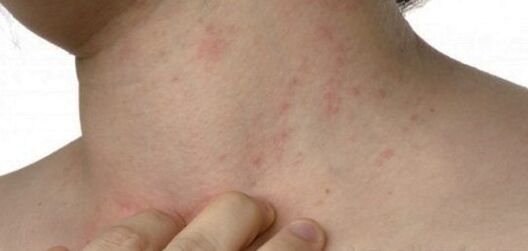
Symptoms of the initial stage of the disease
To recognize the initial phase of the disease, it is important to know what the primary symptoms look like.At the very beginning, single papules appear that can be from a few mm to 2-5 cm and have a form of plaque covered with white scales.When they were abolished, it was manifested by a characteristic symptom of the Psorian Troika:
- "Antine spot" (light compartmental scales during shock);
- "Terminal film" (exposure of shining, thin and wet skin after removal of scales);
- Symptoms of "Blood Rose" (with further removal of the terminal film, a small drop-like blood drop on the skin surface).
The initial phase of the disease is characterized by the occurrence of psoracy foci in places that are most often subjected to trauma of any kind.As a rule, these are elbows, the knee area in places is combed or scratched.These manifestations are called the "Symptom of Kebner".At the very beginning, the papular rash spreads linearly, directly to irritation and can exist long without dynamics.These rash are called "Guard".Rash itches larger and itching.The initial phase lasts a few weeks.After that, the papules increase and merged in psoriathic plates, which are able to cover significant areas of the body.Psoriasis can occur anywhere.The most dangerous rash on the face are, but this form of the initial phase is very rare.
Characteristic places of localization of diseases in the initial phase
The most common rash:
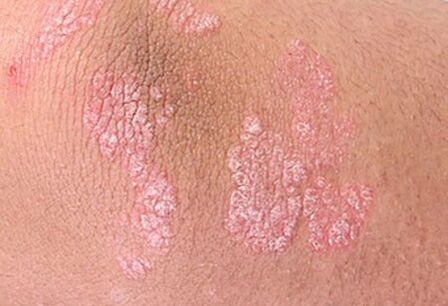
Legs.The initial phase of psoriasis on their feet develops from individual small rashes that are mainly located on their feet and knees, but can occur on any surface of the leg.
Elbows.The most common plane occurs on the elbows, the symptoms are characterized by a red little rash with strong peeling.At the same time, the rough skin on the elbows.In addition, the rash on elbows can be symmetrical.
Nails.On the hands on her nails, psory-rising manifestations reminded of a fungal infection.First of all, longitudinal tapes (points) occur on the edge of the nail (in the photo), and then spread to nail roots.At the same time, nail plate begins to thicken and blunt.With the advancement of symptoms of the disease, the nail area can be completely cautious.
Face.Psoriasis is very rare on the face, because this form of psoriasis is considered atypical.Hypersized papules appear in the area of eyelids, nasolabial folds, close to the eyes and eyebrows (in the photo).In rare cases, the rash on the face appears in red copper conditions and mucosal membranes (cheeks and tongue).
The specificity of the face rash is associated with sensitive, sensitive skin and abundance of nerve endings.Papules appear first (small, slightly raised above the skin, nodules), accompanied by severe itch.After that, epithelium and plaques appear at the top of the node.
Hands.Symptoms of psoriasis on their hands suddenly appear, appear in the form of a small rash (in the photo), which many patients take as an allergy.And only with the appearance of the gray dry scales on their hands, palms, as well as on elbows, patients turn to a dermatologist for help.It is characteristic that if there is a psoriat rash on the palms, similar manifestations are respected on their feet.Psoriatic manifestations on the palms of the palms are most often localized between the fingers, which explains the most favorable environment in this place.The last parts of the brush are amazed much less often.When psoriatic stains appear on their fingers, the loss of their sensitivity is possible.
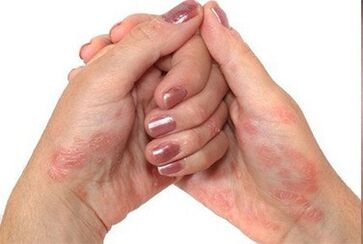
Psoriasis Photo of the initial phase
- Decryption on network tests - urine, blood, general and biochemical.
- What do bacteria and inclusions mean in urine analysis?
- How to understand the child's analyzes?
- Features MRI analysis
- Special tests, ECG and ultrasound
- Norms during pregnancy and value of deviation ..
What is it?Psoriasis is a skin disease of ineffective nature, so it is impossible to become infected.It does not only affect the skin, but also has a negative effect on the entire organism as a whole.It is characterized by a chronic course with periods of deterioration and sprout.The disease causes the immune cells of one's own body, ie it is an autoimmune disease.It comes out of skin depth to the upper layers, these cells cause inflammation, excessive division of cell epidermis, leading to excessive growth, the appearance of new small capillaries.From the outside, it looks like the formation of red or crimson places - psorithic plaques.
First signs and symptoms of psoriasis
Since psoriasis - a systemic disease that affects all body systems - patient suffers from general weakness, rapid fatigue.The main symptom of the initial phase of psoriasis are psoriatic rashes and plaques, however, monitors a person with further disease development.They arise due to the accelerated uncontrolled division of cells in the upper layer of skin-keratinocytes.Cells involved were formed, and the skin in these areas is thickened, acquires red due to improved creation of new capillaries.This leads to smaller dripping bleeding for any, even light, plaque injuries.The plaque surface is often covered with gray work, a similar paraffin.Even the term "formed" paraffin lakes "is made up of dead epithelial cells due to the surface of the plow. Skilles can reach each other. They are hotter-sized, often accompanied by a heavy.
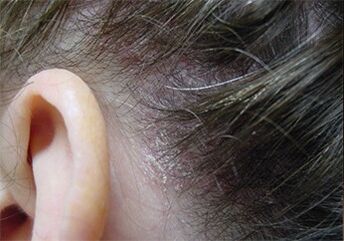
Over time, nails are beginning to change.Their surface becomes exhausted, appears to be pressed, pink spots are noticeable under the nail plate - the battery of liquid, the nails becomes yellow, thickened, takes the shape of a poultry claw.All this happens due to the breach of nail nutrition and blood circulation.The nail bed is subjected to excessive keratinization, which leads to the rejection of the nail and loss.There is often a red inflammatory border around the nail.On small joints affects the disease and small compounds - this is accompanied by pain and inflammation.In addition to plaque, with psoriasis, papules, skin - small (about 1 mm) protruding protruding formation resembling a rash.Often localized on elbows and knees, saved even in the period of remission.During the plaque improvement, they begin to bright than the middle, acquire the shape of the rings and can completely disappear.Pigmented areas remain in place.Psoriasis on the scalp has the same symptoms as on the body.In this case the hair structure does not change.The rash also covers the adjacent areas of the skin - behind the ears, around the neck.
Types of psoriasis
According to manifest symptoms, the disease is divided into two types: pustula and non-audiences.There are several varieties of disease in these groups.
Forms of pustular psoriasis:
- generalized;
- Manual;
- palmoplantar (affects mainly limbs);
- Ladomary;
- Psoriatic impetigo.
- plain (chronic psoriasis plate);
- Eritrodermic.
In addition, the following types of diseases are characterized:
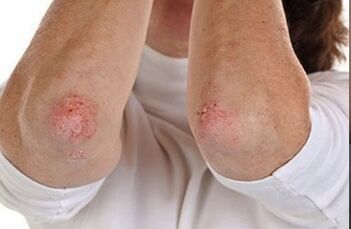
- Napkin psorias;
- Psoriasis of skin folds and flexible surfaces;
- Seborrheic-basin;
- The medicine.
- light (less than 3% of the body surface);
- average (influenced by up to 10% of the body surface);
- Hardly (more than 10% of surfaces are affected).
Depending on the form of rash, this type of psoriasis differ:
Psoriasis Development Stages, Symptoms
The first plaques appear in areas with dry skin and never happen where the skin is too wet, for example, armpits.First, the appearance of stains can be seen on the inside of the elbows, below your knees, along the boundary of hair on the head, as well as in places undergoing any injuries or friction.The location is usually symmetrical.You are taking such phases during the disease:
- progressive (formation of new points, growth of existing, more ivic, noticeable peels);
- Stationary (slowdown or suspension of the growth of plaque, the absence of newly formed spots);
- Regressive (reduction or lack of peeling, disappearance of stains and plaque with the appearance of pigmented areas of skin in their place, signs of psoriasis are almost absent).
There are no special tests to establish a diagnosis.The diagnosis is done on the basis of external characteristic characteristics.One of these signs will be the appearance of bleeding during the scraping of plaque, so-iscuted bloody dew.The second specific sign of psoriasis will be the presence of a pale border around the young papule, still not covered with scales.This is what the name of the vascular reaction on the skin looks seems, which means the advancement of the disease.In severe forms of disease, blood images can be changed.The signs of the flow inflammatory process appear.In some cases, you need to make a biopsy to turn off other skin diseases and confirm the presence of psoriasis.
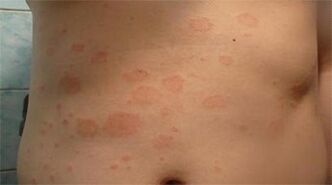
Effective treatment of psoriasis
In the treatment of psoriasis, local medications and internal, physiotherapy and health resort are used.In the initial mild course of the disease, fat-shaped drugs are used.First, fats and creams of simple composition are used, then go to a fat containing hormones.Psoriasis cream should only be applied to plaques and stains.With the average and difficult during the disease, internal products that affect the whole body are used, but the best results are used.This group includes vitamin A, immunosuppression, cytostatic.Physiotherapists bring tangible relief to patients with psoriasis, can inhibit disease development and sometimes replace the use of some medications.UV radiation (phototherapy), laser, ultrasound and magnetotherapy, hyperthernes, electrons, electrophoresis, electrophoresis are used.Psoriasis is capable of resisting the use of treatment over time, so changes in methods (treatment rotation) from time to time.The disease with the manifestations on the head is treated in the same way as in other parts of the body using fats and physiotherapy.
Diet with psoriasis
Nutrition should be helped to adjust to metabolism and prevent the look or deteriorate of skin symptoms.Since almost all patients have a violation of lipid metabolism, preference should be given to low products.Special fire diet, Penano gained a wide glory.When composing a diet, you must try to retreat with some simple rules:

- Rejection of alcoholic beverages;
- Food up to 6 times a day, little by little;
- Turn off fried, smoked food from the diet;
- Reduce the content of salt in food;
- If possible, do not consume food with color content, stabilizers and other dietary supplements;
- Exclude citrus fruits;
- Increase the proportion of vegetables and cereals in a diet;
- Mandatory use of vegetable oils.
Compliance with these simple rules will help avoid deteriorating psoriasis and compile therapeutic nutrition independently.
Psoriasis Home Phase Symptoms Photo
Among the main first symptoms of the initial phase psoriasis differ the occurrence of small papillary elements of an epidermal dermal nature.In the early stage of psoriasis, in the photo, the papules look small, with a pink head, a hemispheric formations with a smooth, shining surface.A few days later, they were covered with silver white, light heavy scales.Such manifestations are called "Point" psoriasis.In an early stage psorias characterize the appearance of new small elements of psoriasis or the growth of already existing signs of psoriasis.
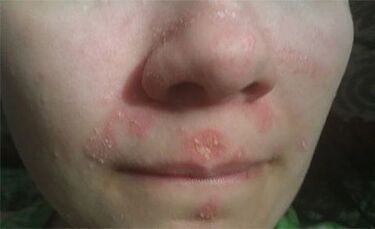
Almost the presence of the phenomenon is incorporated according to the linear psoriotic elements that occur after any injury, for example, after combing with difficult itches, etc.Finally, with a progressive phase, patients feel the itchy of different intensities, which are usually not characterized by other phases of the process.The duration of the progressive phase is an individual.Usually a progressive phase lasts 2 weeks to a few months.During that period, it is best to use non-harassment fats from Psoriasis as a prevention and further treatment.
The regressive phase of psoriasis is the final phase of the psorian cycle.It is completely reduced by peeling, gradual flattening of elements in the center and their subsequent complete resolution.In this case, a picture of different figures (arches, trapezoids, rings) can be obtained.In this case, psoriasis is called "geographical".There may be another way to address the elements in which the element peripheral begins.No scars or atrophy formed.Hyperpigmentations or areas that are deprived of pigment (psoriatic pseudo -proderm) may occur in the place of permitted elements.These changes are temporary.It should be noted that such a division is largely conditioned.In some cases, it is difficult to establish a process phase immediately.In this case, the diagnosis of psoriasis is established after the patient's observation.























